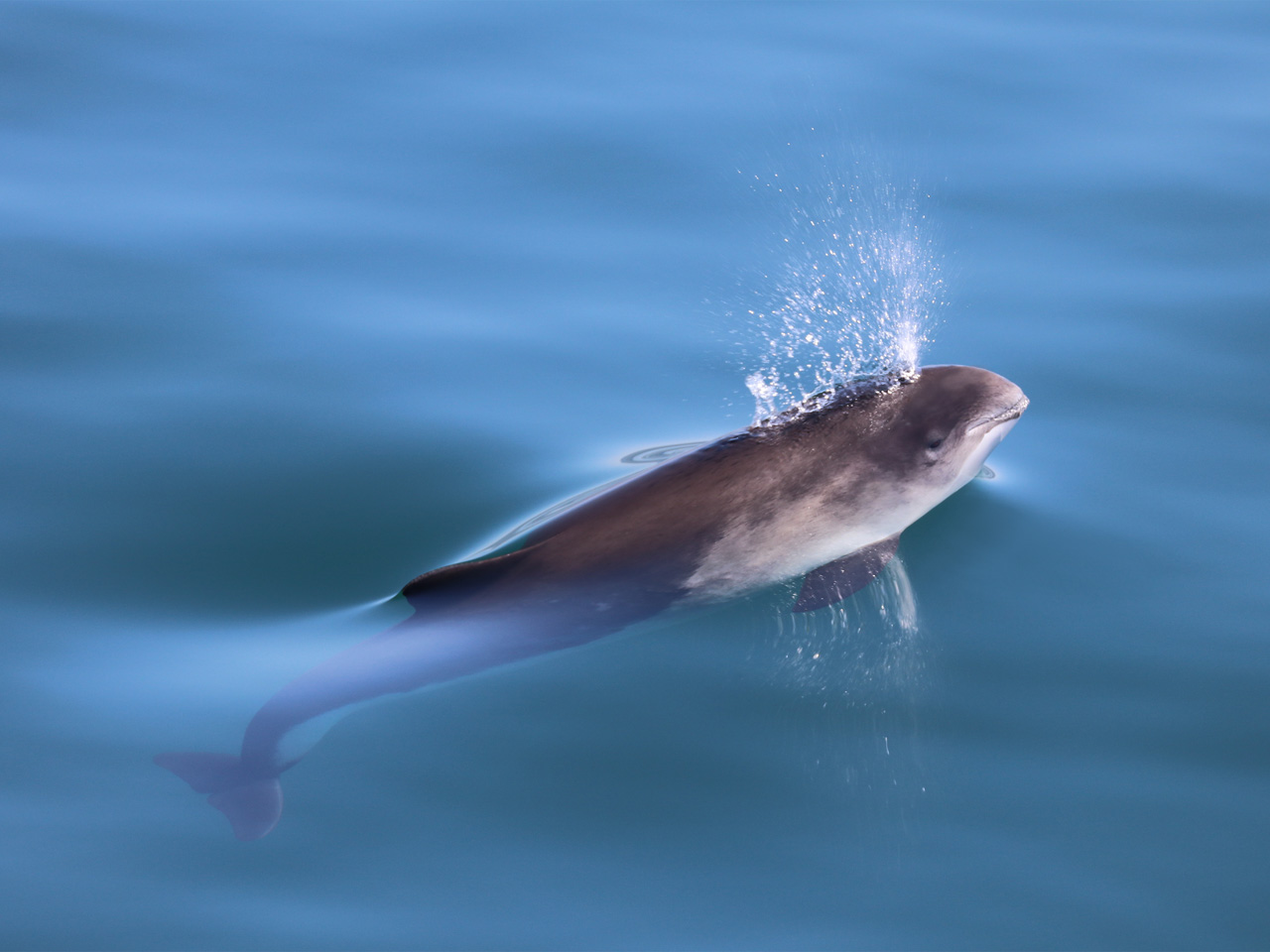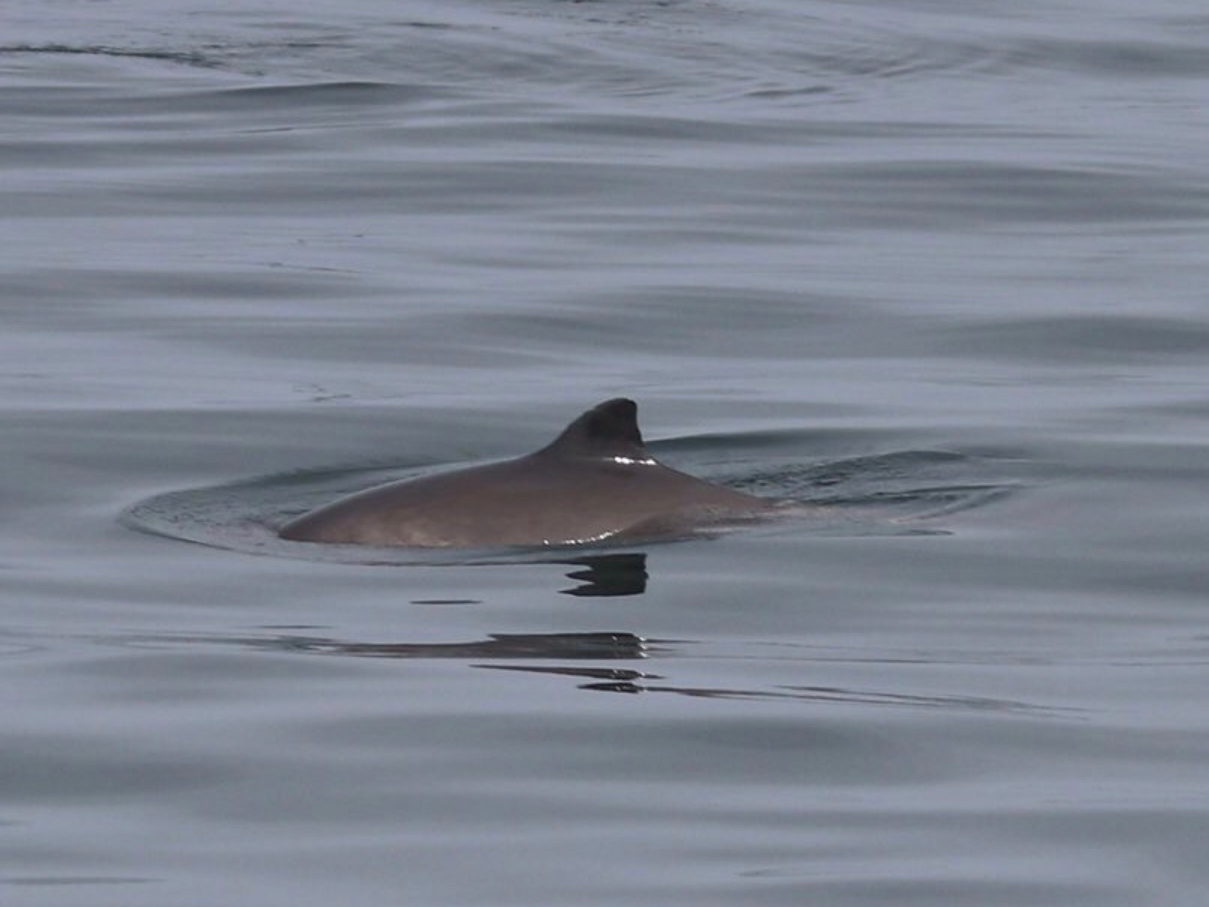Show Some Love for the Humble Harbour Porpoise

Photo: Harbour Porpoise, The Sound of Sleat, Inner Hebrides, Scotland
My weary eyes strain from the search as they scan the blue-green shimmer of the surface for any sign of life. Life that has more place below the waves than above. I raise my binoculars from my chest to my eyes and peer towards the horizon, the edge of my world, seeking that glint of sunlight off the dark back of a mammal at the surface or the tell-tale snow white willow-the-wisp splash from a distant dolphin. Nothing. No feeding seabirds, no sharks basking, not even the distant silhouette of a passing freighter. Empty. As if we were thousands of miles offshore in the middle of one of the vast ocean voids.
We only left harbour a few hours ago. We are still above the continental shelf in less than a hundred metres of water. Some days this is just the way the ocean is. Sometimes seemingly vacant and lonely, at other times teeming with life like an African savannah. Feelings of melancholy wash over me. I know that the ecological conditions below us can change rapidly but it has been a long afternoon without as much of a sniff of even a seal. It isn’t as if the state of the sea is against us. To call it mirror calm would be erroneous, but a soft swell and very little wind gives the sea a gentle demeanour without even a hint of a white cap.
Whale watching is all about patience. Put the time in out on the ocean or from a headland and eventually you will be rewarded. There is no limit as to how long it will take but it will happen. Your reward could come gift wrapped in an all singing all dancing close encounter with one of the great whales. Typically, it will simply be a fleeting glimpse of a far off dolphin fin barely breaking the surface. The virtue of your patience should be enhanced by the beauty of the seascape. If you can appreciate the ever changing colours and hues of the ocean and the clouds above, work out the moods of the sea, and be attentive to the many other creatures that share the watery world of the whales, the time will pass quicker and the longing can be assuaged.

Photo: Harbour Porpoise, Small Isles, Scotland
I knew these lessons well and was a long way from giving up when my own reward duly arrived. From the top deck a couple of hundred yards off the starboard bow of the ship I watched a smudge appear on the water - a small surface print of shiny calm water, like an oily eddy. We call this a flukeprint and it is made when the tail fluke of a cetacean vertically beats under water during propulsion and is close enough to leave it’s tell-tale sign on the surface above. My heart lifted. The size of the print and the stealth of it’s appearance could only mean one species. True to form a small curved dark brown back appeared a short distance ahead followed by the distinctive triangular fin of a harbour porpoise. A split second and it disappeared. Then another rolled a few metres from the first - no head or tail on show just a tiny, unobtrusive back and fin. There were two of them! I watched them surface a few times and then they were gone. Like old friends they had popped up and saved my day. They had provided no more than a moment or two of excitement and exhilaration, but it was enough, and I adored them for it.
I don’t quite know why porpoise excite me so much but they do. If I had to choose a favourite cetacean species then harbour porpoise would be right up there. For whale watchers as well as fishermen and other inshore seafarers in the north Atlantic they are often constant companions. There are an estimated 700,000 minimum worldwide. Over 400,000 of those reside in the North Sea and around the British Isles. In these areas they are a reliable sighting if the sea conditions allow. They aren’t strikingly marked like common dolphins or known for their showy acrobatics and playfulness in the way that bottlenose dolphins are. In fact their slight size (never more than 1.9 meters in length and no more than 75 kilograms in weight, with a small body to surface ratio) means that with their high metabolic rate they need to constantly feed in order to gain enough energy to survive in cool, temperate waters. Perhaps they simply don’t have enough time on their hands to play in the way that their larger dolphin cousins do. They are often referred to as living on a metabolic knife edge. Maybe “as preoccupied as a porpoise” should be their idiom, in a similar vein to “as busy as a bee”.
Harbour porpoise can easily be spotted from land. They are sometimes seen in harbours, estuaries and sea lochs. Two were even spotted merrily swimming up the River Parrett in Somerset, as much as fifteen miles inland, during the UK’s 2020 Covid pandemic lockdown. Their accessibility undoubtedly contributes to my fondness for them. Historically, pre-industrial fishermen off Newfoundland lived side by side with them and also held them in high regard, dubbing them “puffing pigs” due to the puff like exhalation of air that can be heard when they surface close to a silent boat. I have also seen reference to the similar name of “little puffers ” (Puthag in Gaelic) being used in some Scottish West Coast communities. The common Gaelic word for porpoise is simply Peileag – a term which interestingly has a subsidiary meaning relating to a short, fat individual.

Photo: Harbour Porpoise, Isle of the Arran
They are without doubt an underdog and as such I am naturally drawn to them. Their seemingly shy nature lends itself to my inevitable anthropomorphising but the struggles that they face are more than real. In recent years they have been recorded as victims of attacks by dolphin species, particularly the much larger common bottlenose dolphin. There are images from West Cornwall to Scotland of them being tossed into the air like ragdolls and the Scottish Marine Animal Strandings Scheme say that their necropsies show that between 40-60% of Scottish harbour porpoise strandings have injuries consistent with dolphin attacks. Whilst the likelihood is that these attacks are the result of territorial and resource competition rather than predation, the same can’t be said of the interaction between porpoises and grey seals. In the last decade grey seal predation off the coast of the Netherlands has been identified as one of the major causes of death for harbour porpoise locally. There are also records of similar occurrences in Pembrokeshire in Wales.
Harbour porpoise are also susceptible to incidental bycatch, particularly via entanglement in set gill nets within inshore fisheries. This is an ongoing issue for the population and can lead to localised impacts on populations in some areas. Monofilament gill netting is so fine that it can be almost invisible to fish and often targets similar species to the porpoises’ target prey. It is also a welfare issue for the individual animal. To be caught in one of these nets means an almost certain slow death from drowning. There is ongoing work to mitigate for incidental bycatch, particularly through the use of “pingers” attached to the nets in order to deter the porpoises.
Despite all their tribulations these little creatures continue to determinedly go about their business with almost distain for our presence. We must not forget that they are an extremely successful species in their own right, and as our smallest cetacean in North Atlantic waters that achievement has to be acknowledged. The UK is lucky enough to be situated in prime harbour porpoise territory and we have a duty to conserve the habitat that they rely on.
Despite unfair stereotypes, harbour porpoises are far from dull, they are in fact, a complex and exciting species that certainly give me great pleasure to watch. Perhaps next time that you are close to the ocean, and it is a millpond flat day (the best for porpoise observation) scan the water and keep an eye out for a tiny dark fin to break the surface as it’s back quietly rolls through the water and maybe you too might fall in love with this lovely wee animal.